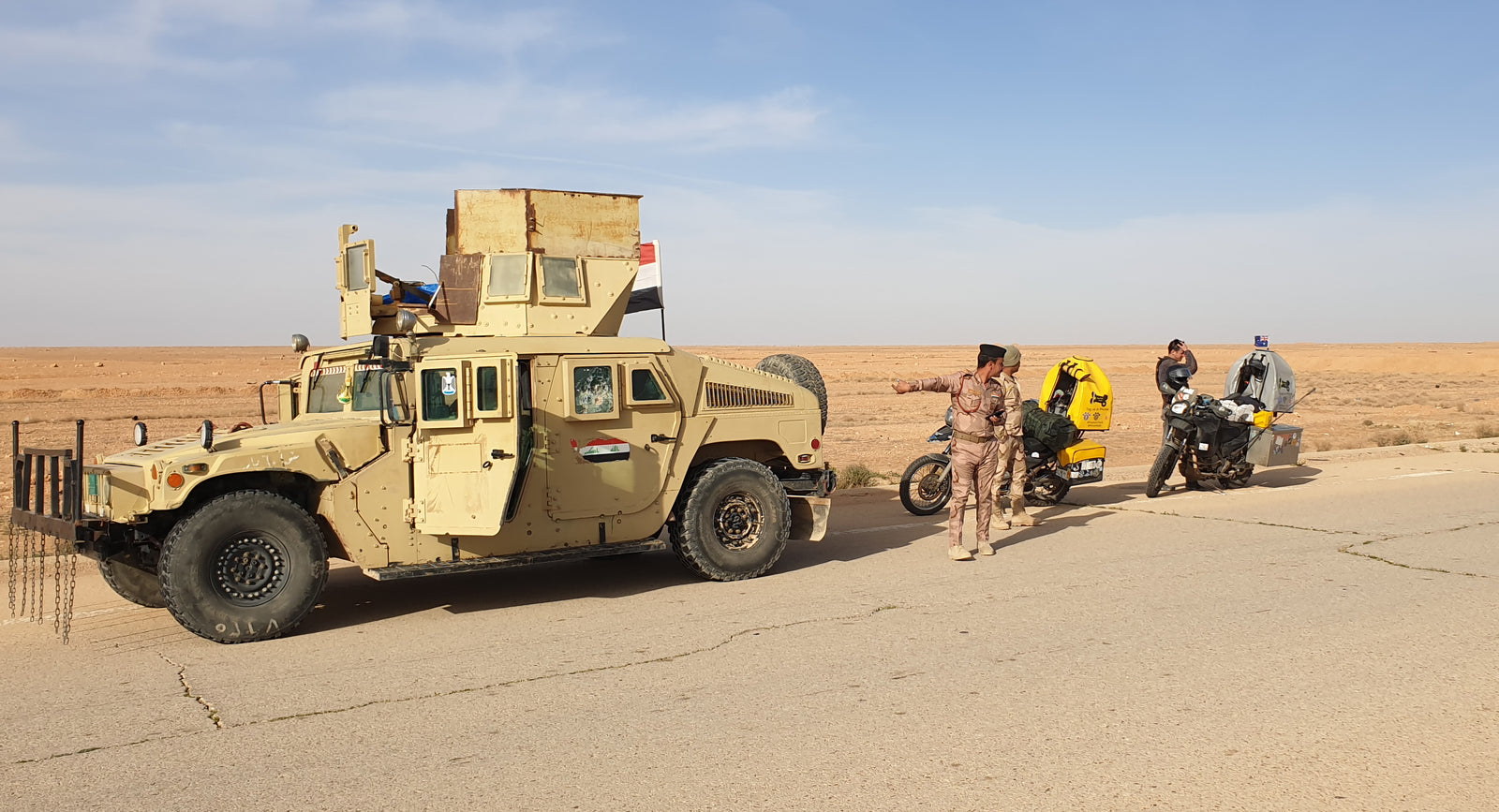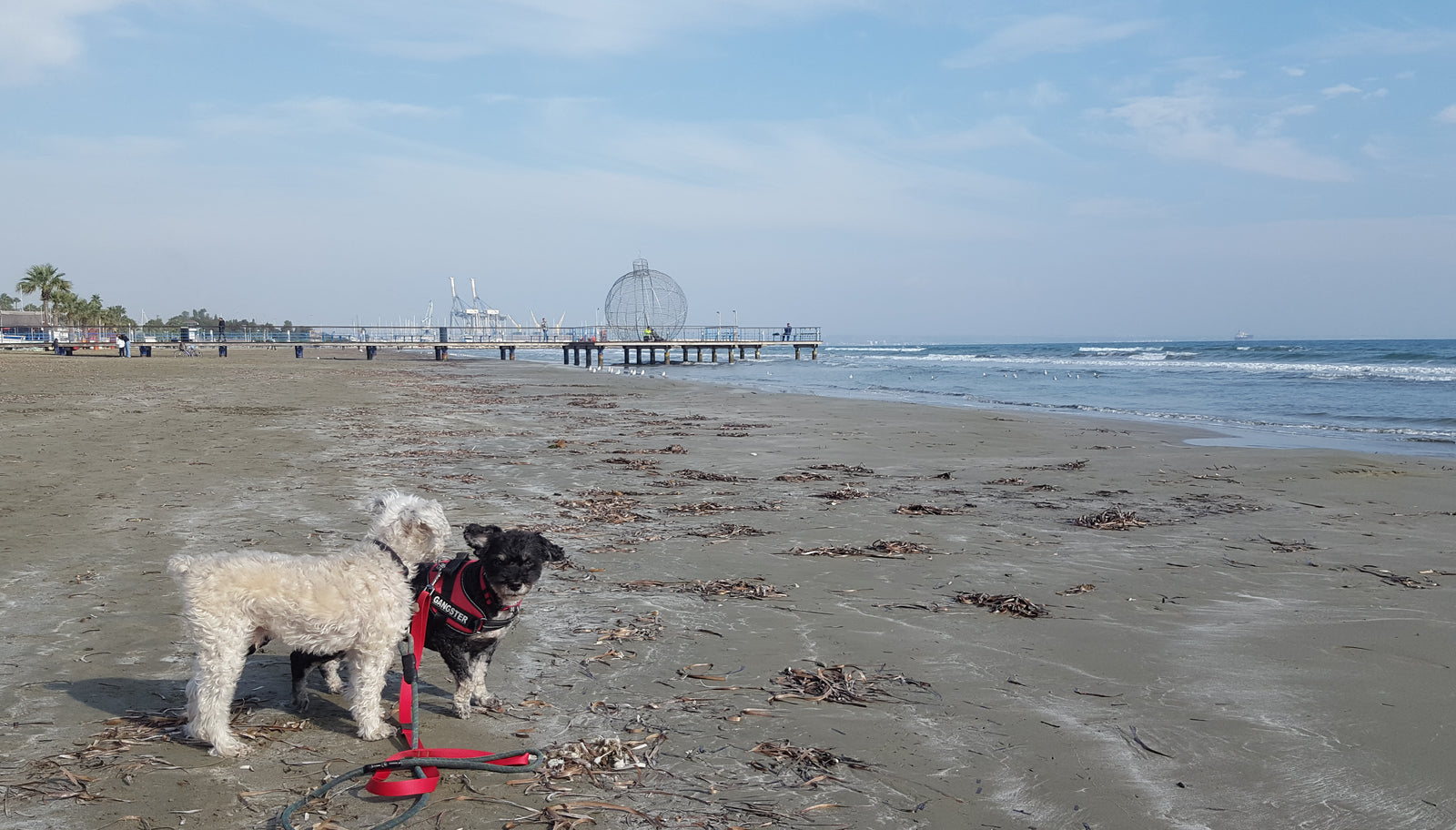Pet Movement through Southern Africa
July 27, 2017
Told in the collective first person, jointly from Stu and Janell Clarke's perspective.
Narrated Audio Blog
We'd had issues entering South Africa from Namibia due to the dogs, but it was easy enough to overcome. What was needed was an animal import permit. Once issued this document could be used to import an animal into any of the Southern African Customs Union (SACU) countries and was valid for 30 days.
Getting the animal import permit in Namibia had been straight forward. We visited the state vet near the South African border and they checked our paperwork and produced the permit on the spot. But our stay in South Africa had extended beyond the 30 days, which meant we'd need a new permit to continue travelling through the customs union. Obtaining the permit in South Africa proved to be a little more bureaucratic than Namibia. We visited a local vet who explained that they would normally conduct a preliminary examination and then send off the documents to Johannesburg for the permit with a turnaround time of up to 3 weeks. The local vet suggested that if we had time we could walk the documents into the office and maybe it would be dealt with faster. This seemed like a good idea and worked well with our plans which had us visiting Johannesburg anyway.
Finding the department of agriculture in Johannesburg was not easy. Information was very vague and involved a little interpretation. We found a few possibilities from government websites and Google Maps but decided to check the addresses listed on the official website first. This took us to what we'd later be told was a very dangerous part of Johannesburg. It was obvious that we were in the wrong place, the building seemed abandoned, in fact the entire suburb was run down and derelict. We had anticipated this and knew where to head next. Google Maps took us into the CBD, a much more likely location of a government department, but still it wasn't easy to find. Street numbers were not clear but after asking around we found the building and with a few more inquiries we found the floor number. We'd found the right department, but the state vet worked out of a different building in a different part of the city. It wasn't far but did require us to get back on our bike and ride.
Walking into the state vet office it looked as if they were in the middle of a move. We were taken through a labyrinth of office furniture with desks and cabinets stacked on top of each other and small clearances created to form workspaces. There was just too much furniture for the space and the few staff working were left to make do. We found the person responsible for issuing the permits and showed her our paperwork. She was very helpful and although needed a little time, processed us as a priority and before we knew it we were on our way with a permit that would last for the remainder of our time in the SACU.
While in South Africa we were contacted by Sean and Lee-Anne from Richards Bay who had welcomed us into their home and shown us around the region where there really is lots to do as a tourist. Lee-Anne was originally from Swaziland and her parents still lived there running a luxury guest house with views over Sibebe Rock, the second largest monolith in the world after Uluru (Ayers Rock) in Australia. Lee-Anne had told her mum Marylyn all about us and our travels with dogs and as Marylyn was a fellow animal lover with a number of rescue dogs she very much wanted to meet us and offered to host us at her guest house. We had planned to visit Swaziland even if very briefly and so graciously accepted the offer.
This visit to Swaziland would be the first test for our new permit but more importantly and definitely more worryingly would be seeing how reentering South Africa would go. The permit, although valid for 30 days, was written as if it were for a single use, with a destination country stated. Our permit said Swaziland as this was the first country we planned to use it for but the state vet assured us that this would not limit its use. The crossing into Swaziland was easy in all respects, the permit worked but we did need to insist on holding on to it rather than surrendering it as they would have preferred.
One very striking observation at the Swaziland border was the free condoms made readily available along with information about AIDS and safe sex. AIDS is more prevalent in Southern Africa than anywhere else in the world, over 10% of the world's total population of HIV infected people live in Southern Africa. Swaziland tops the list with over 27% of its adult population infected. While no country outside of Southern Africa has a prevalence over 10%, Swaziland, Botswana and Lesotho are each over 20% and South Africa falls just short but tops the list by sheer numbers having over seven million people living with the disease. As an overlander travelling through Southern Africa the reality of the AIDS epidemic was not obvious. But it was an encouraging sign to see the issue was taken seriously with condoms and education made available.
There is a good argument to say that the only reason Southern African countries rate so high is because they have good data and take the epidemic seriously while other parts of the continent don't conduct sufficient testing or maintain valid records. For example, when Stu was working with the UN in South Sudan they were reporting 7% for some states, but the government influenced this data by controlling who could be tested, but estimates had the numbers around 20% which was probably closer to the truth. If this was happening in a country with such high UN presence then it's easy to believe that a lot of other countries are also behaving in a similar manner.
We only spent one night in Swaziland, but it was very memorable. On arrival at the Ematjeni Guest House we were greeted at reception and treated to chocolate cake and coffee while we were waiting to be checked in. Marylyn was out walking her dogs at the time but her staff took very good care of us. We were shown to our room, a fully self contained suite with kitchen, lounge room and two bedrooms. The lounge room and bedrooms all had a lovely view over Sibele Rock. The entire apartment was furnished to perfection, like something out of a lifestyle magazine. Its hard to explain just how out of place we looked in our worn and grubby riding amongst such class and luxury. We were being very spoiled, and it just kept coming. We were asked if we would prefer dinner in the restaurant or in our room. We didn't want to miss a moment of enjoying this incredible place so we opted for the room. We could have a hot shower and relax in the super soft bathrobes provided and just admire the view. Before we knew it someone was knocking on the door to set the table and prepare the room for dinner, we'd never experienced anything like this before, such amazing service and attention to detail.
After dinner we met with Marylyn and her husband in their private quarters within the guest house. We sat and talked til late over some lovely South African wine but unfortunately we didn't get as much time as we would have liked with this fascinating couple. Although the offer to stay longer was extended, the challenge of riding back to Europe was constantly in the back of our minds and we really needed to start moving.
The next morning we again had the option of breakfast in our room or at the restaurant and again took the room option, this time so we could be packing as we waited. It was truly a five star experience and we could not have been more thankful to Marylyn and her husband for their hospitality and for giving us this opportunity that we certainly would otherwise not have experienced. We said our farewells and made our way to the South African border.
Getting back into South Africa was again an easy process using the animal import permit. We were now heading for Victoria Falls and had the option of going directly into Zimbabwe or travelling through Botswana for part of the journey. As far as distance was concerned there wasn't much in it but one border crossing is usually better than two. However, we'd heard the horror stories about Zimbabwe and its instability and although this wasn't too big a concern the idea of fuel shortages were. Our Touratech long range tanks allowed us to travel nearly 900km between fuel stops, entering directly from South Africa would be a close call, while crossing further up from Botswana would make it much more likely of reaching Zambia without the need for fuel.
The decision was made to cross via Botswana. Border crossing within the SACU hadn't been difficult and this border was no different. Unfortunately we didn't see too much of Botswana, the main attractions were located in national parks where our dogs would not be welcomed. But it served its purpose of allowing us to cross into Zimbabwe far enough north that we didn't require fuel before Zambia.
Leave a comment
Comments will be approved before showing up.
Also in Dog Blog

Iraq
March 30, 2022 1 Comment

Turkey & Azra
March 30, 2022

Cyprus
January 12, 2022
Are you a Dog Person?
Do you Love to Ride?
Click below for more information on how you can take your best friend along on your next biking adventure
© 2025 The Pack Track.
Powered by Shopify